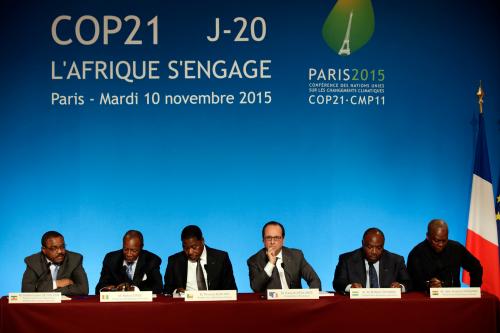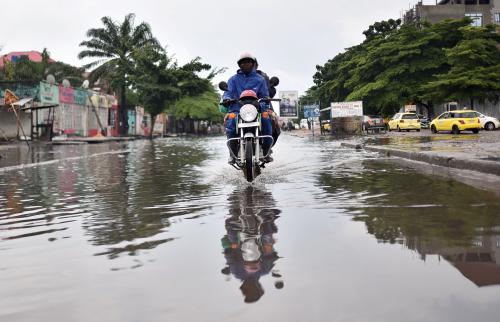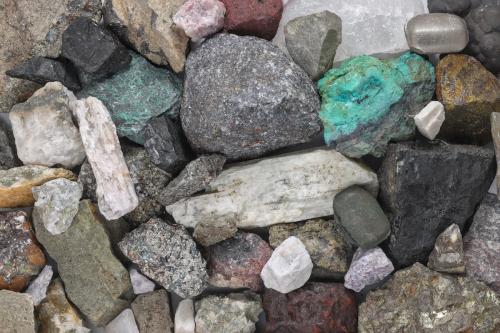Weeks after the entry into force of the Paris Agreement on climate change, world leaders are gathering from November 7-18 in Marrakech, Morocco for the United Nations Climate Change Conference, COP22. The Paris Agreement, adopted by 196 Parties, seeks to strengthen the global response to the threat of climate change by keeping the world’s temperature rise this century below 2 degrees Celsius of pre-industrial levels and striving to limit it to 1.5 degrees Celsius. COP22 hopes to further define the rules for the Paris Agreement’s implementation and lay out a viable plan for providing at least $100 billion by 2020 to developing countries to support climate action. Over 20 African nations have ratified the agreement and climate change remains at the forefront of many African national and regional agendas.
According to experts, climate change carries more danger for sub-Saharan Africa and other developing regions than for many developed nations. A 2013 World Bank report found that food security will become Africa’s greatest challenge due to the effect of extreme weather events such as droughts and floods on agricultural productivity. According to the report, a 2-degree Celsius increase in temperature will contribute to farmers losing up to 80 percent of cropland conducive to growing maize, millet, and sorghum by 2040. A 4-degree Celsius increase will result in annual precipitation decreases of up to 30 percent in Southern Africa while East Africa will see a marked increase in precipitation levels. Some African countries have already experienced notable increases in their average annual temperature since 1960, as indicated in Figure 1 (below) from a recently released New Climate Economy Working Paper, “Africa’s New Climate Economy: Economic Transformation and Social and Environmental Change.”
Figure 1: Observed mean annual temperature change in selected African countries since 1960
 Source: UNDP Climate Change Country Profiles (various dates) in Africa’s New Climate Economy: Economic Transformation and Social and Environmental Change.
Source: UNDP Climate Change Country Profiles (various dates) in Africa’s New Climate Economy: Economic Transformation and Social and Environmental Change.
As carbon dioxide levels increase, according to scientists, the ecosystem in some areas of Southern Africa will change from grass to woodland savannahs, reducing food for grazing cattle., Figure 2, from a 2013 World Bank report, “Turn Down the Heat: Climate Extremes, Regional Impacts, and the Case for Resilience,” shows the mean of the percentage change in the annual Aridity Index in a 2°C world (left) and a 4°C world (right) for sub-Saharan Africa by 2071-2099 relative to 1951–1980. A negative change corresponds to a shift to more arid conditions. A decrease in aridity does not necessarily imply more favorable conditions for agriculture or livestock, as it may be associated with increased flood risks. Another World Bank study warns that the increased desertification and extreme weather events exacerbated by climate change could lead to a $520 billion drop in consumption by 2020.
Figure 2: Projected impact of climate change on the annual Aridity Index in sub-Saharan Africa
 Source: Turn Down the Heat: Climate Extremes, Regional Impacts, and the Case for Resilience, World Bank.
Source: Turn Down the Heat: Climate Extremes, Regional Impacts, and the Case for Resilience, World Bank.
Representatives from African nations will come to Marrakech to present their Nationally Determined Commitments (NDC)—their plans for reducing greenhouse gas emissions by 2015-2030—promised at COP21. In addition, this week, developing and developed countries launched a new partnership dedicated to delivering on the commitments made in Paris. The NDC Partnership is a new coalition working to ensure that developing countries will receive the technical and financial support needed to achieve climate goals. Germany, a co-chair of the partnership, will align its international climate finance to the Partnership and increase this support from €2.7 billion ($2.9 billion) to €4 billion ($4.3 billion) by 2020. China, through its Africa Renewable Energy Initiative, and Brazil through its Biofuture Platform, also have important roles to play.
Also at COP22, stakeholders will hope to work out details of how the funds—a $100 billion commitment from development countries—will be raised: The sum may come from bilateral sources such as the U.K.’s Department for International Development, multilateral sources such as the World Bank, multilateral funds such as the Green Climate Fund, government contributions, or sources of innovative financing, such as through France’s financial transaction tax.
Junaid Belo-Osagie contributed to this post.
The Brookings Institution is committed to quality, independence, and impact.
We are supported by a diverse array of funders. In line with our values and policies, each Brookings publication represents the sole views of its author(s).








Commentary
Figures of the week: COP22 and climate action in sub-Saharan Africa
November 16, 2016